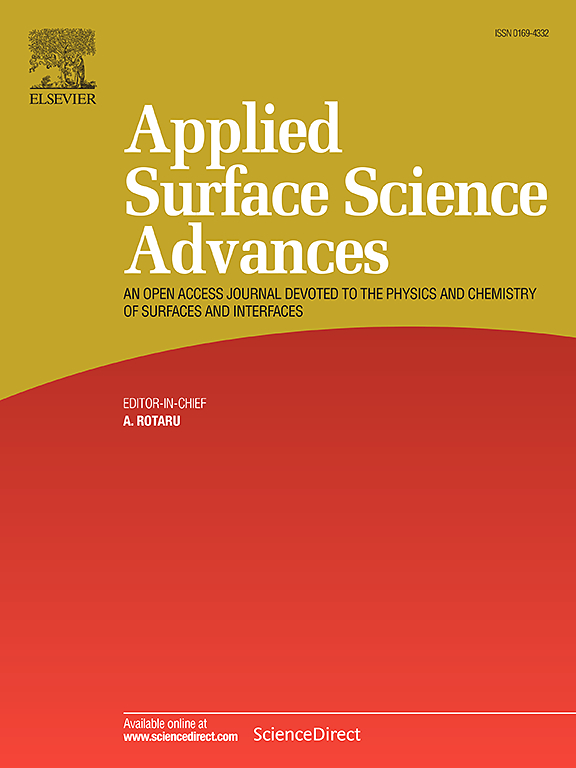A new approach for nuclear forensics investigations of uranium dioxide: Application of laboratory-based photoelectron spectroscopy with hard and Soft X-ray sources
IF 8.7
Q1 CHEMISTRY, PHYSICAL
引用次数: 0
Abstract
Nuclear Forensic investigations rely on the analysis of the chemical and physical properties of nuclear materials. X-ray photoelectron spectroscopy (XPS) is a powerful tool that supports material assessment, typically analyzing the top few nanometers of the material. The onset of laboratory-based hard X-ray photoelectron spectroscopy (HAXPES) instrumentation provides the opportunity to probe deeper into the material’s bulk. The work presented in this study demonstrates the utility of a combined XPS and HAXPES analysis to isolate forensic signatures on the surface and into the bulk of uranium dioxide. A non-destructive depth profile, using the transitions observable with a 9.25 keV excitation source, highlighted an oxidized overlayer deeper than the XPS sampling depth. Peak fitting of high-resolution spectra allows identification of uranium oxidation states as well as inspection of secondary features, which provide insight into the material characteristics with an evolving chemistry from the surface to a more bulk like composition. Inelastic background analysis is performed to determine the in-depth distribution of atoms, developing a consistent model to describe the surface overlayer, correlated to the chemical and stoichiometric differences over the excitation range. Finally, the MNN X-ray excited Auger electron spectra are acquired from uranium dioxide for the first time for future use in the application of a Wagner chemical state plot to support nuclear forensics investigations.
二氧化铀核取证研究的新方法:硬、软x射线源实验室光电子能谱的应用
核法医调查依赖于对核材料的化学和物理性质的分析。x射线光电子能谱(XPS)是支持材料评估的强大工具,通常分析材料的前几纳米。基于实验室的硬x射线光电子能谱(HAXPES)仪器的出现为深入探测材料的主体提供了机会。本研究展示了XPS和HAXPES结合分析在分离表面和大量二氧化铀的法医特征方面的实用性。使用9.25 keV激发源观察到的跃迁,一个非破坏性的深度剖面突出了比XPS采样深度更深的氧化覆盖层。高分辨率光谱的峰值拟合可以识别铀的氧化状态以及检查次要特征,从而深入了解从表面到更大块的化学成分演变的材料特征。进行非弹性背景分析以确定原子的深度分布,开发一致的模型来描述表面覆盖层,与激发范围内的化学和化学计量学差异相关。最后,首次从二氧化铀中获得了MNN x射线激发俄热电子能谱,用于未来瓦格纳化学状态图的应用,以支持核法医调查。
本文章由计算机程序翻译,如有差异,请以英文原文为准。
求助全文
约1分钟内获得全文
求助全文

 求助内容:
求助内容: 应助结果提醒方式:
应助结果提醒方式:


